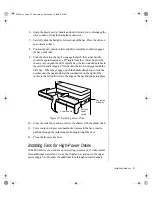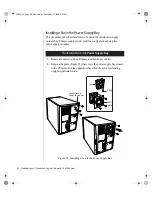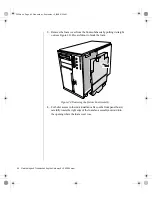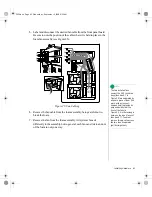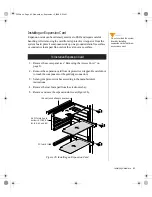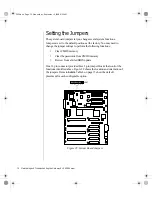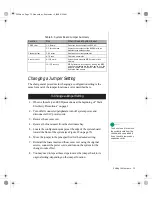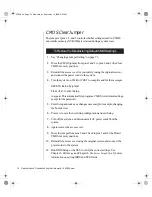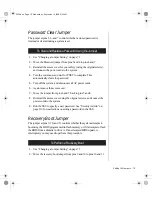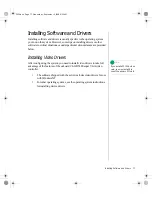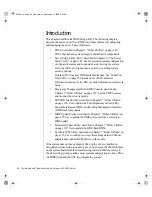
Installing Hardware 69
7.
Press the new battery in the socket with the positive pole (+) up. Be
sure you have pressed the battery down far enough for it to contact the
base of the socket.
8.
Close the case, as described in “Closing the System” on page 7.
9.
Reconnect the power cord and turn on the system.
10.
Enter the BIOS Setup program and verify that the system
configuration is correct using the data you recorded in Step 2.
If the CMOS data is not correct, change the information in the setup screens
as necessary.
Troubleshooting the Battery Installation
If you have problems after installing the new battery, try each of the items
listed below, replacing the cover and restarting the computer after each try.
•
Turn off the system and ensure that all exterior cables are attached
to the correct connectors and secured.
•
Check to be sure that all power switches are on. If the system is
plugged into a power strip or surge protector, be sure it is turned on
also.
•
Enter the BIOS Setup program and compare the settings on the
screen with your notes or the system hardware manuals. Correct
any discrepancies.
•
Turn off the system, remove the cover, and verify that all cables
inside the case are attached securely. Also, make sure that the
colored cable edges are aligned correctly and that the connectors
did not miss any pins. Disconnect and reconnect the cables, and
then replace the cover carefully so as not to disturb any cables.
•
Turn off the system, remove the cover and, if you have the proper
test equipment, verify that the new battery has power. (It is
possible, although highly unlikely, that your new battery is
defective.)
If these procedures fail to correct the problem, contact technical support.
3424.boo Page 69 Wednesday, September 2, 1998 9:23 AM



